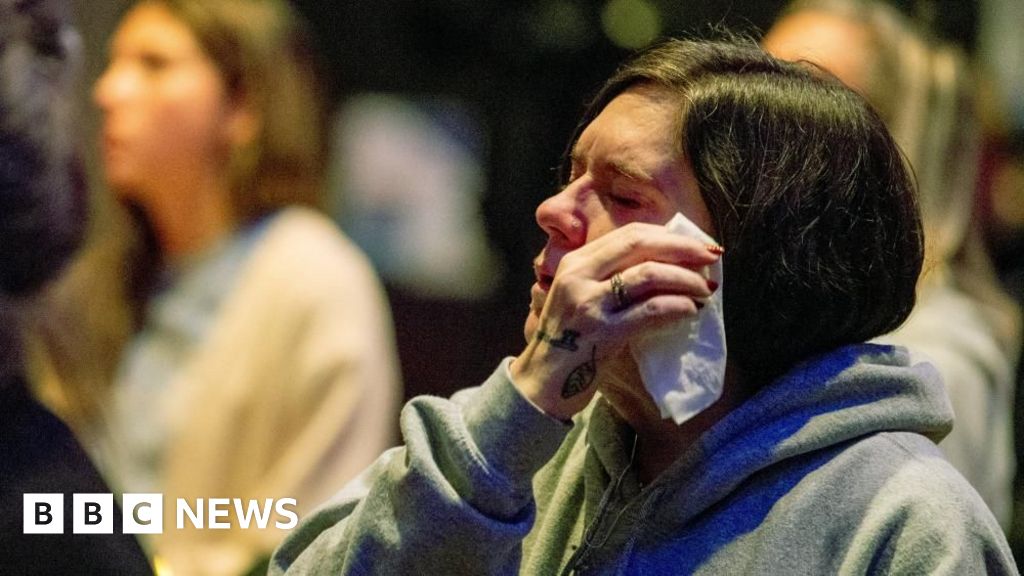 |
|
The tragic events that unfolded at Abundant Life Christian School in Wisconsin serve as a stark reminder of the pervasive threat of gun violence in schools. A 15-year-old girl, identified as Natalie Rupnow (also known as Samantha), opened fire in a study hall, resulting in the deaths of a teacher and a student, and leaving six others injured. The swift and decisive actions of a second-grader who dialed 911 before 11:00 local time (17:00 GMT) proved instrumental in alerting the authorities and potentially minimizing further casualties. The bravery of this young child, whose identity remains undisclosed, underscores the terrifying reality these children face and their remarkable resilience in the face of unimaginable horror. The chilling fact that a second-grader had to make a 911 call during a school shooting highlights a systemic failure to adequately protect our children within educational environments. The quick response time of the Madison police department is commendable, however, the underlying issue of easy access to firearms and the prevalence of school shootings demands a more thorough and comprehensive solution.
The details surrounding the incident remain under investigation. Authorities are still piecing together the events leading up to the shooting and attempting to ascertain the motive behind Rupnow's actions. While some online text attributed to Rupnow has surfaced, authorities have yet to verify its authenticity. The cooperation of Rupnow's family with the investigation is noteworthy, although it does little to alleviate the pain and suffering experienced by the victims and their families. Two students remain in critical condition, facing life-threatening injuries, while others are recovering from physical and emotional trauma. The psychological impact on all students and staff present during the shooting is profound and will likely require extensive counseling and support in the coming weeks, months, and years. The community is rallying around the victims and their families, offering prayers, support, and assistance during this difficult time. Local media reports describe a community in shock and mourning, grappling with the aftermath of this senseless act of violence.
The incident at Abundant Life Christian School raises several critical questions about school safety protocols, mental health resources for adolescents, and the ease with which minors can access firearms. The fact that this event occurred in a Christian private school, an environment often associated with a sense of safety and security, underscores the universality of this problem. No school, regardless of its size or type, is immune to the potential for gun violence. This necessitates a comprehensive review of security measures in all schools, including increased security personnel, enhanced surveillance systems, and possibly even metal detectors. Furthermore, addressing the root causes of school shootings requires a deeper understanding of the mental health struggles faced by many young people. Early intervention programs and readily accessible mental health resources are crucial for identifying and supporting students at risk. Finally, and perhaps most importantly, a concerted effort is needed to curb the availability of firearms, especially among minors. Stricter gun control laws, background checks, and responsible gun ownership practices are essential to prevent future tragedies.
The narrative surrounding the Wisconsin school shooting is multifaceted. It is a story of grief, loss, and community resilience, but also one that highlights systemic issues requiring immediate and sustained attention. The bravery of the second-grader who made the 911 call is a testament to the courage of children, but it is also a stark illustration of the extreme circumstances in which these children are forced to operate. The focus should now shift from the immediate aftermath of the shooting to long-term solutions aimed at preventing such incidents from happening again. This involves not only enhanced security measures and improved mental health support but also a broader societal conversation on gun control, violence prevention, and the responsibility of creating safer environments for our children. The memory of the victims and the unwavering resilience of the survivors must serve as a catalyst for change, ensuring that no other child has to experience the horror of a school shooting.
The emotional toll on the entire community is immeasurable. Witness accounts from students like Nora Gottschalk and Adler Jean-Charles vividly depict the chaos and fear that ensued. The statement by Bethany Highman, a former student with a daughter currently attending the school, reflects the anxieties shared by parents across the nation. The question of why this tragedy occurred, and how to prevent similar events from happening in the future, is a question that weighs heavily on the minds of countless people. The investigation continues, and as details emerge, the community will need sustained support and resources to heal from this devastating event. The long-term impact will be felt for years to come, and a collaborative effort across various sectors, from law enforcement and education to mental health services and legislative bodies, will be crucial in fostering a safer and more supportive environment for our children and communities.
Source: Second-grade student called police over Wisconsin school shooting
